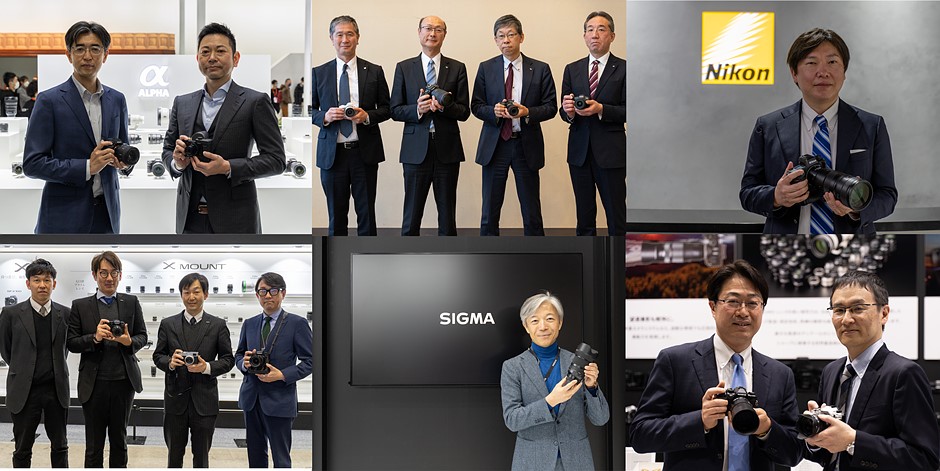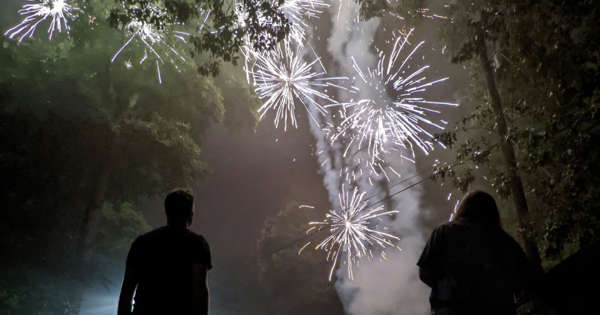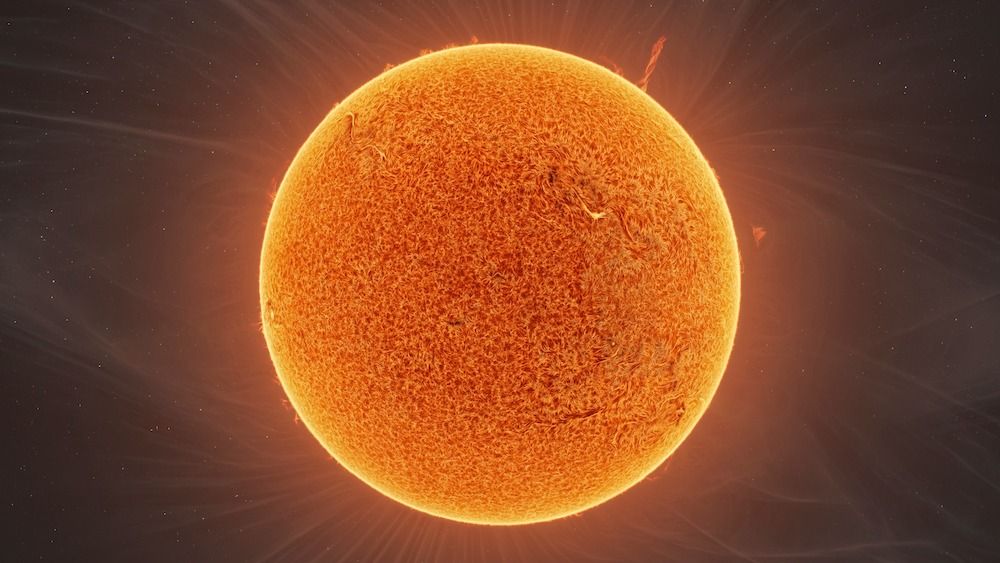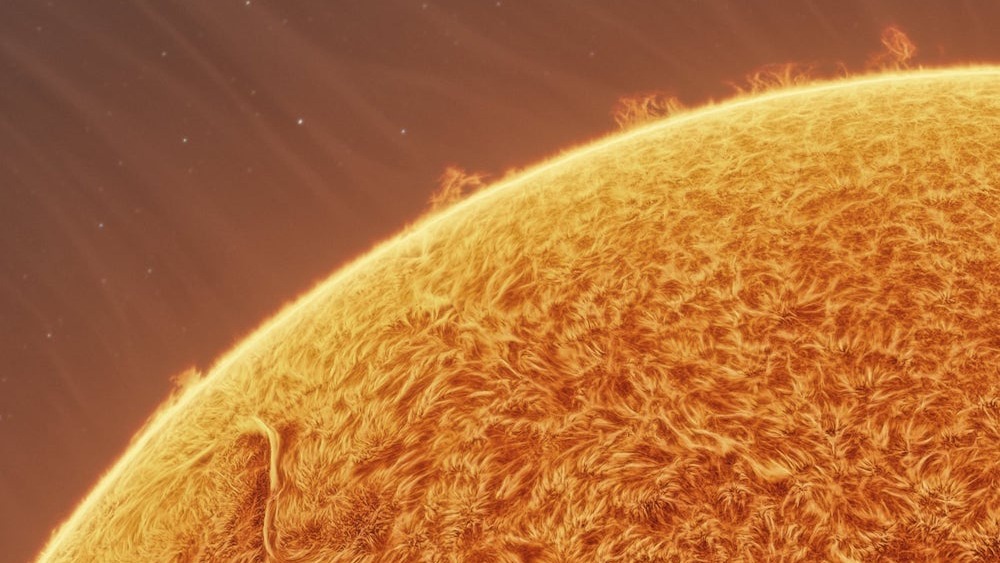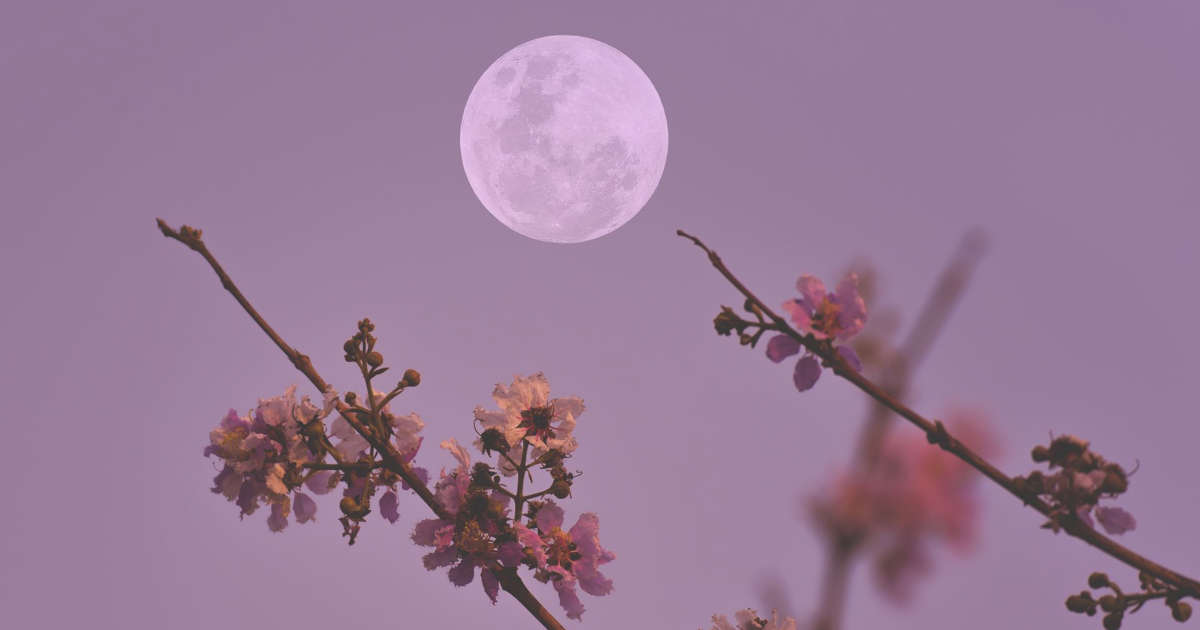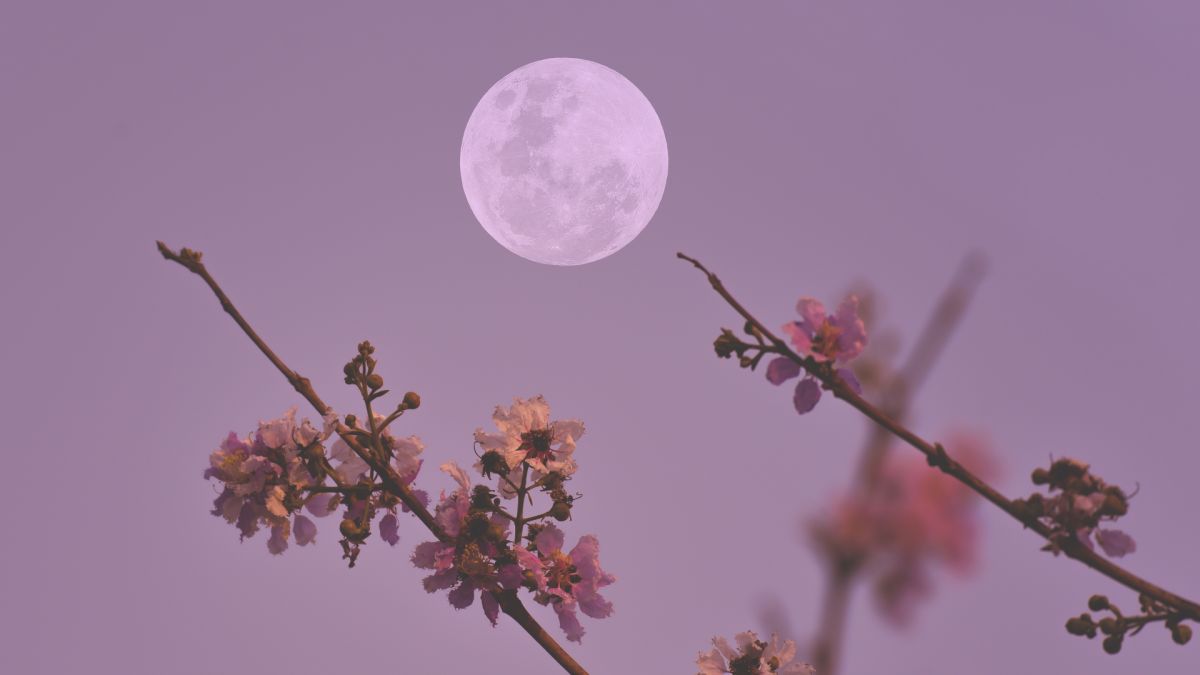 |
| Some of the camera company executives we interviewed at CP+ 2023. (Clockwise from top left: Sony, Canon, Nikon, OM Digital Solutions, Sigma, Fujifilm.) |
A few weeks ago I attended the CP+ Expo, the camera industry’s annual trade show, in Yokohama, Japan. CP+ is a great place to see the latest and greatest camera products, but we make the yearly pilgrimage to Yokohama for other reasons.
More importantly, CP+ is where we meet with and interview the industry’s top leaders to gain insight into the state of the camera industry and what we may see in the years ahead. So, as we wind up editorial operations here at DPReview, I thought it would be useful to share what the people who make your cameras think about the current status of their (and our) industry and where it’s headed.
What follows are the trends and themes that revealed themselves over a week of formal and informal meetings with senior executives from almost every major camera and lens company, both inside and outside the scope of official interviews.
The camera market may finally be reaching an equilibrium
The camera industry has been on a roller coaster ride for years. The transition from film to digital saw vast numbers of consumers buying digital cameras, and the availability of affordable DSLRs, a/k/a the ‘Rebel bump’, attracted photography enthusiasts in droves. Annual product announcements promised real, measurable improvements in performance and drove rapid upgrade cycles, leading enthusiasts to buy new cameras every couple of years and frequently more often.
 |
| Most of the industry leaders I spoke with believe the camera market is reaching a point of equilibrium. |
As we’re all aware, the smartphone changed everything. The average consumer left dedicated cameras in the rearview mirror, resulting in a steep industry contraction.
According to camera executives, the good news is that the market has either bottomed out, meaning it will remain relatively stable or will see some growth in certain areas like video.
The market may have finally reached a natural equilibrium point, similar to the film era.
In essence, they suggest that the market may have finally reached a natural equilibrium point, similar to the film era, where a segment of the population will buy dedicated cameras no matter what other market forces are in play. The people in this group are the spiritual successors to those who bought interchangeable lens film cameras before digital was even a thing; they represent the stable customer base the camera companies are looking for.
Video is driving the market
If there’s a single theme virtually every leader in the industry can agree on, it’s that video is a significant growth driver for the market. Video content is everywhere, and the expectation is that video – whether used by TikTok creators or international media brands – is the best hope of driving the market.
Every company is placing a considerable emphasis on attracting hybrid users who shoot both stills and video and, in some cases, only video. We’re going to see camera companies focusing more on video features and capabilities and probably many more products explicitly targeting that audience. It’s why a company like Nikon, which isn’t historically known as a go-to company for video products, put so much emphasis on video features in a camera like the Z9.
 |
| Camera companies see video as one of their most significant growth opportunities. Witness how much effort Nikon put into making its Z9 flagship camera a video powerhouse. |
In a nutshell, every manufacturer I spoke with said the data tells them that video is where the growth opportunities will be found, and we can expect them to act accordingly.
Everyone is looking to ‘creators’ for growth
Camera companies see video use growing across all categories of users, but there’s one segment they’re all laser-focused on: creators. I couldn’t get through five minutes of conversation without hearing the word ‘creator.’
Camera companies see video use growing across all categories of users, but there’s one segment they’re all laser-focused on: creators.
But what, exactly, is a ‘creator?’ At a basic level, it’s someone who uses a camera to create content for public sharing. But let’s be clear about what the camera companies mean when they talk about targeting ‘creators’: Gen Z and teenagers. I’m not just speculating; they straight up told me that in multiple conversations. Camera companies see this demographic as a critical market for the future, and there’s a land grab going on to attract these users in their formative years to create brand loyalists.
Sony has been the most successful at this so far with the budget end of its ZV series of vlogger-oriented cameras. In some markets, it has launched special programs to promote these cameras in schools and provide student discounts. If you look at the entire ZV line, though, there’s already an upgrade path from starter to full-frame models. Sony hopes that some of these users will eventually graduate to the FX series as their careers grow.
 |
| Camera companies want to reach Gen Z and teenage ‘creators’ and are building products designed to connect with this audience. |
Sony isn’t alone. A significant portion of Nikon’s booth at CP+ was aimed at creators: it was a colorful, hip area with staff in sweatshirts proclaiming ‘Nikon Creators,’ and it was generally packed. Other companies have similar messaging.
You may think this is very different from the traditional camera market, and you’re right – this group of consumers cares about different things than you do. For example, one executive I spoke with told me that this market isn’t very worried about Raw files, and many don’t know what they are.
You’re not going to get a camera without video
There’s a group of people we can depend on to post a comment under every camera review proclaiming, ‘Just give me a pure camera with no video features!’ While I appreciate where that purist sentiment comes from, I have bad news for you:
You’re not going to get it.
If what I’ve said so far tells you anything, it should be clear that camera manufacturers are putting more resources into video, not less.
If what I’ve said so far tells you anything, it should be clear that camera manufacturers are putting more resources into video, not less; they see video as a growth driver for their individual brands and the industry as a whole. They could make a stripped-down camera without video features, but as my colleague Richard Butler explained in an article, it would probably cost more, not less.
 |
| Video is here to stay. You won’t be able to buy cameras without it unless you use a specialized product like a Leica rangefinder. Though you probably won’t save money by doing so. |
There are a few niche products, like Leica rangefinders, that don’t include video, and these will probably continue. Still, they will continue to be limited in number and cost a premium.
A focus on creating unique products
A word that came up a lot in my discussions was ‘unique,’ expressing a desire by companies to make unique products. That isn’t rocket science; every company wants unique products to differentiate itself from the competition. But in the context of the camera industry, it means something a little different.
For the past several years, there’s been a scramble by Canon, Nikon and Panasonic to gain a market foothold with their full-frame mirrorless systems. In many cases, the focus was less on producing unique products and more on building out a complete system to broadly appeal to photographers: camera bodies that hit all the important price points, key lenses like 35mm, 50mm, and 85mm primes, and coverage of the popular zoom ranges.
 |
| The Sigma 14mm F1.8 Art lens was a unique product that helped grow the market for astrophotography. Now that most mirrorless systems are relatively complete, camera and lens makers plan to release more unique products to help grow market segments. |
Now that those systems are more mature, manufacturers told me they want to focus on products, particularly lenses, that are unique to their systems. They wouldn’t share specific product plans (they generally won’t), but Kazuto Yamaki, CEO of Sigma, explained that, if done correctly, unique products don’t just fill a market need – they have the potential to grow the market.
Manufacturers told me they want to focus on products, particularly lenses, that are unique to their systems.
An example of this was Sigma’s 14mm F1.8 prime lens. It quickly became a favorite of astrophotographers, and access to that lens drove people who had never done astrophotography before to try it. In essence, that lens, and the category it created, grew the entire market for wide-field astrophotography. We can probably expect to see more examples of specialty products like this in the future.
Manufacturers don’t see smartphones as competition
This one surprised me. I was sure most manufacturers would express concern about having to compete with smartphones. After all, smartphones were undoubtedly the single most significant factor driving the contraction of the camera market over the past few years. And yet, this wasn’t the case. I was repeatedly told that manufacturers see smartphones as complementary rather than competitive technology.
I don’t know if I buy this, though it may go back to the market equilibrium I discussed earlier. Manufacturers may believe we’ve reached a point where the remaining buyers in the market are enthusiasts and pros who care enough about photography that they’re not a flight risk, who will buy a camera alongside their smartphone. And they may be right.
 |
| I expected camera makers to express concerns about competing with smartphones, but I was wrong. Most see smartphones as a complementary rather than competitive technology. |
Several manufacturers even indicated that they see smartphones as potentially driving market growth. The ubiquitous presence of smartphones is part of what created the vlogger generation. (Can I take credit for coining the term ‘Gen V?’) Some of these users will naturally seek out higher-quality cameras, and manufacturers are trying to position themselves to connect with them and create brand loyalty when they do. However, I’m not convinced that any of them have figured out how to do it (yet).
Manufacturers may believe we’ve reached a point where the remaining buyers in the market are enthusiasts and pros who care enough about photography that they’re not a flight risk.
If camera companies plan to treat smartphones as a complementary technology, it would be great to see them embrace that philosophy when it comes to, you know, functional integration with those devices. Right now, smartphone support is all over the map. While my experience with Nikon’s SnapBridge is that it works reliably and integrates pretty seamlessly, I’d be happy if my Fujifilm app worked on anything other than the newest models. There’s an entire continuum between the two.
We’re just getting started with AI
If there’s another thing every camera company can agree on, it’s that they want the letters ‘AI’ on their products. Today, AI is used chiefly to deliver improved subject recognition and tracking using algorithms trained by machine learning. AI will get more sophisticated, probably quickly, and a few insiders shared off-the-record examples of what we might see.
Imagine a camera that analyzes what’s in the viewfinder and understands that you’re shooting a sporting event. The camera might evaluate the first few frames in a burst shot to determine if there’s motion blur and, if necessary, increase the shutter speed in real-time to compensate. It might also adjust your burst rate on the fly based on how much the image changes between frames. For example, if you’re shooting a group of sprinters at the starting block, holding down the shutter might result in a very slow burst rate. Within milliseconds of the runners starting to move, the camera could ramp up its burst rate in response.
 |
| Many recent cameras include AI technologies to assist with functions like subject recognition and tracking. Industry leaders tell me they expect more AI features to find their way into cameras, and some may even change the way we shoot. |
Or, a camera could detect that you’re shooting a portrait, but instead of going to a default portrait program, it might go the extra step of analyzing the setting, the time of day, the weather and even the mood of your subject. If they’re happy, it might adjust the exposure to be bright and cheery; if they look morose, it might tone down the exposure for a moodier image. If you have a flash attached, it could adjust output to help achieve the appropriate look.
Instead of just spotting patterns based on machine learning, future AI will adapt to how you shoot and learn your style. And that’s all in ‘P’ mode.
AI will get more sophisticated, probably quickly.
I can’t promise you’ll see this type of functionality soon, but this is what manufacturers are talking about doing, and it has the potential to change how we use cameras.
The wrap
Cameras have changed to a staggering degree over the past quarter century. When Phil founded DPReview in 1998, most of us couldn’t have predicted some of the camera features we now take for granted. I suspect the same will be true of cameras 25 years from now in 2048, but the observations above should at least give us insight into what we can expect in the next few years.
What trends do you see coming in the camera industry? Let me know in the comments – I always enjoy a good conversation!



